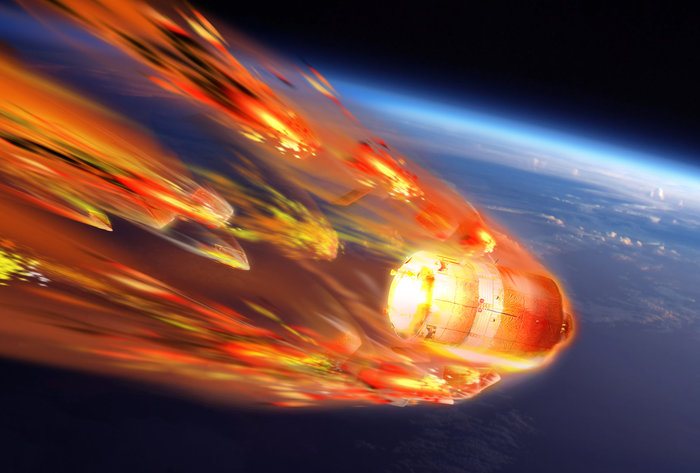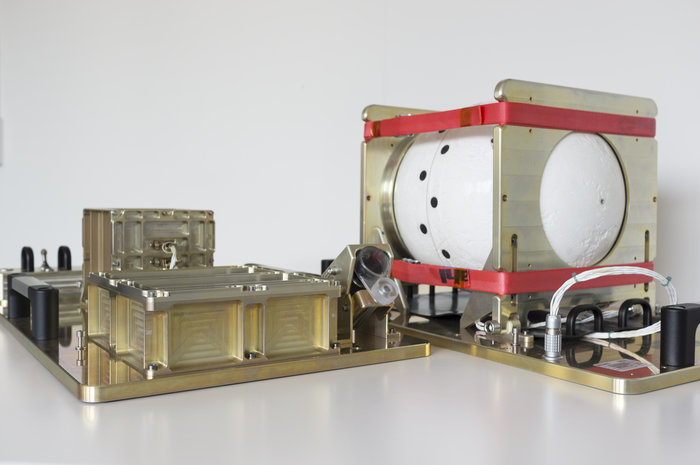ESA watches spacecraft crash in Earth’s atmosphere from inside the ship

As already wrote on Habré, the ATV program, the launch of the ISS supply cargo ships from the European Space Agency, ends this year. The last of the agency’s ships, Georges Lemetre, will be launched on July 26, 2014. Such ships are destroyed / burned up in the Earth’s atmosphere on the way back from the ISS. So that the last of a series of ATV ships does not burn in vain, an ESA is going to install an infrared camera protected from high temperatures.
In order to be in time for the launch of the ship, the project team had to work quite hard, and the monitoring system was developed in just 9 months. The camera is mounted in a Reentry SatCom capsule and is capable of transmitting images from a ship to Earth by retranslating data to satellites, and from there to Earth.
By the way, this camera is not the only one. There is also an optical camera from Japanese developers, i-Ball, as well as a system from NASA, called Re-entry Break-up Recorder.
“These different tools complement each other,” explains Neil Murray, project head at ESA.

Infrared Camera and SatCom Protected Capsule
The camera will be placed inside a special capsule, which is able to withstand temperatures up to 1500 degrees Celsius. To protect against temperature, it was decided to cover the SatCom spherical capsule with a ceramic heat-resistant coating. In addition to protection from temperature, scientists were faced with the task of overcoming interference from the plasma generated around the incident in the Earth’s atmosphere. The data transmitted by the capsule from the ship must pass through any “window” in the plasma. If this does not happen, there is insurance.
The plasma "pillow" will disappear at an altitude of 40 kilometers above sea level, and satellites will be able to "detect" the transmission from the capsule (it should survive the destruction of the ship without problems), after which all data will be transmitted to Earth through a network of satellites.

ATV - schematic sectional view
The capsule has its own antenna, so that data will be transmitted without problems. The transmission will be carried out via the Iridium satellites, this is a group of satellites of 70 units.
The ship should completely collapse at an altitude of 70-80 kilometers above sea level. The speed of the capsule will be about 7 kilometers per second. Scientists will be able to get complete information about the process of destruction of the ship, which will then come in handy when planning future spacecraft.
Via ESA
